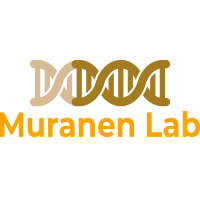Research
Our research is focused on understanding how the tumor microenvironment and the stroma influence drug resistance and cells' ability to survive stresses such as nutrient deprivation.
Schematic representation of the elements of the tumor microenvironment (Kozlova et al 2020).
Extracellular matrix, TUMOR MICROENVIRONMENT AND drug resistance
Our current research efforts are aimed at understanding how the tumor microenvironment contributes to treatment resistance. We are particularly interested in how the cancer-associated fibroblasts contribute to treatment resistance in breast and pancreatic cancer. Our data suggest that cancer-associated fibroblasts secrete matrix proteins, cytokines and metabolites that drive drug resistance towards chemotherapies and targeted agents, such as endocrine therapy and CDK4/6 and PI3K inhibitors. Our efforts are aimed at uncovering the fibroblast-secreted factors that are responsible to resistance, and also at identifying the molecular events in the tumor cells that drive resistance. To do this we use multiple approaches, such as proteome, metabolome and cytokine profiling, as well as 2D and 3D co-culture approaches.
stromal contribution to survival under stress
Our previous data from the drug resistance studies with PI3K/mTOR inhibitors was reminiscent of similar response as seen in lower eukaryotes under caloric restriction. In flies and worms that are nutrient starved the animals survive through similar mechanisms as we had seen in the tumor cells. This was not surprising given that PI3K/mTOR inhibition is known to mimic starvation, leading to reduced nutrient uptake and reduced proliferation. Our published data show that under starvation the stromal cells provide matrix proteins that the epithelial cells 'eat'. These matrix proteins provide nutrient source and crucial survival cues to the starved epithelial cells allowing them to survive brief periods of starvation. Recently we have observed similar matrix dependent adaptive survival programs in tumor cells treated with PI3K/mTOR inhibitors as well as with chemotherapy agents, such as Gemcitabine. We are currently studying the programs tumor cells use to avoid cell death when treated with targeted therapies or chemotherapies. Our current research efforts are focused on identifying therapeutic vulnerabilities in metastatic hormone receptor positive breast cancer and therapy resistant pancreatic cancer.
Ou3D spheroids undergoing drug treatment, dying cells are displayed in red, extracellular matrix in green, and living cells in blue.
Image courtesy of Rachel Davidowitz (racheldavidowitz.com)
3D tumor spheroids in culture
three dimensional models of cancer progression and biology
To investigate these topics we utilize both normal and cancer cells in three-dimensional cell culture systems, which mimic the architecture and organization of living tissues much more accurately than traditional two-dimensional tissue culture systems. We use this platform to in co-culture systems to understand how stromal and epithelial cells communicate with each other, and have also adopted the use of this 3D platform to do proteomics and metabolomics studies to gain insight into multiple pathways and mechanisms the cells use when developing drug resistance. We have recently adopted this system for breast cancer organoids, and are investigating how patient-derived breast cancer organoids interact with cancer-associated fibroblasts isolated from the same tumors and how this crosstalk contributes to tumor growth and drug resistance in hormone receptor positive breast cancer.



